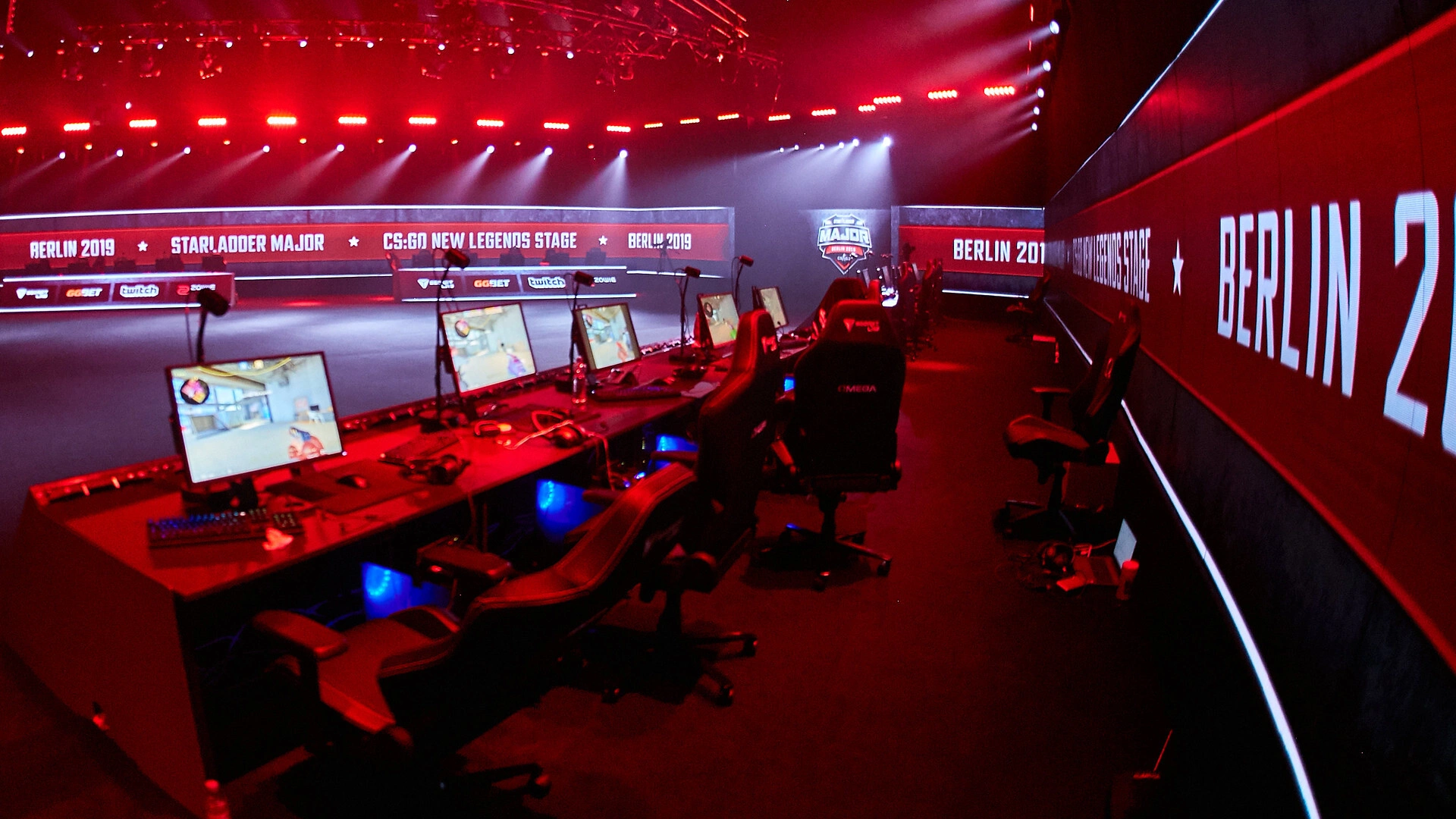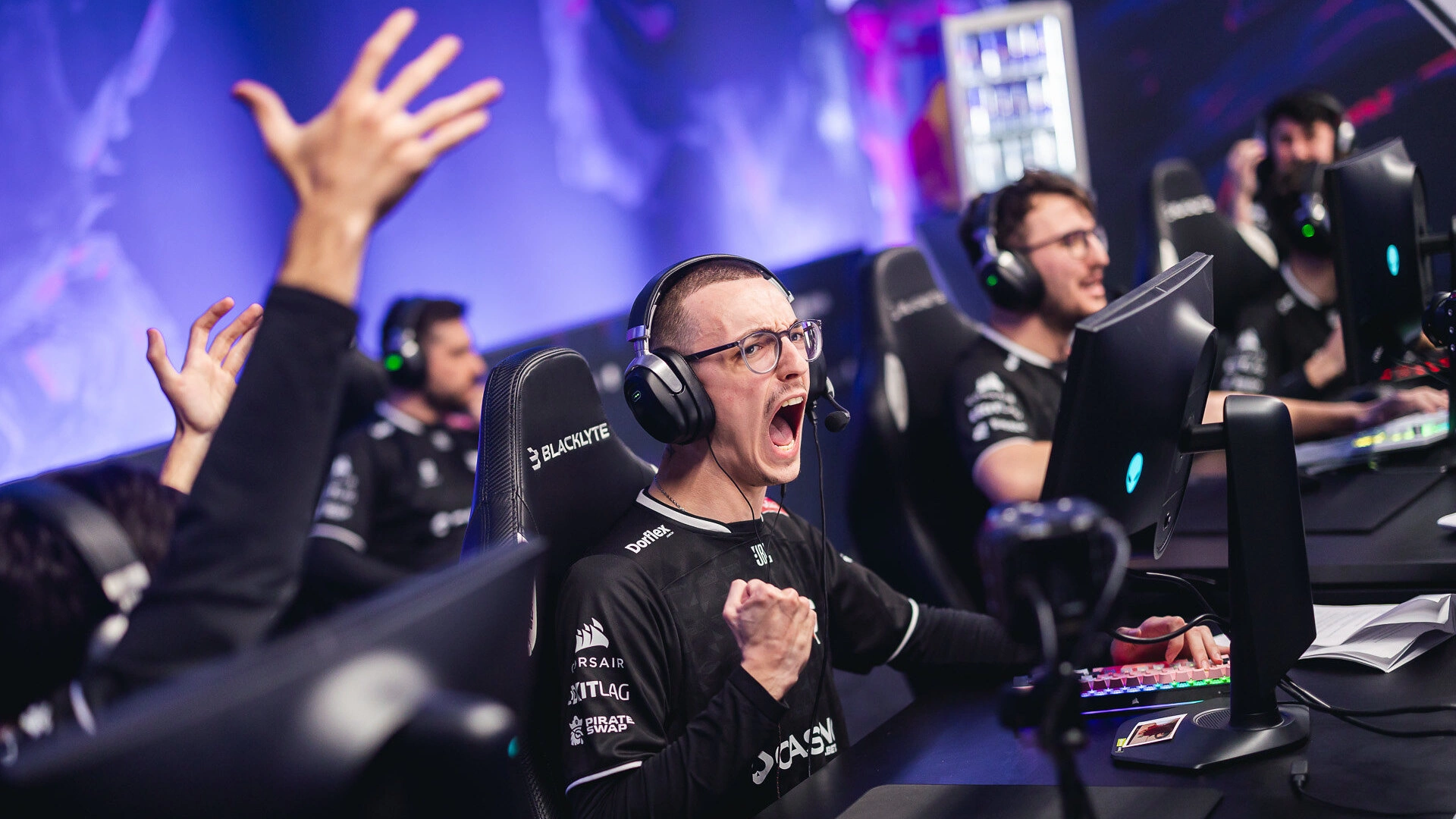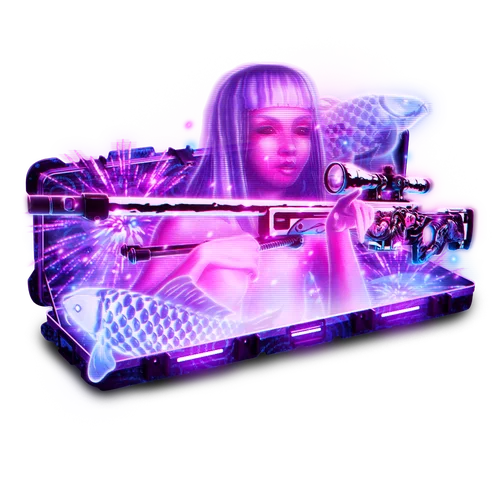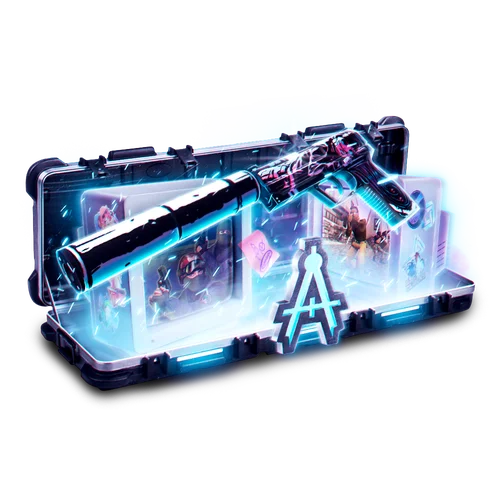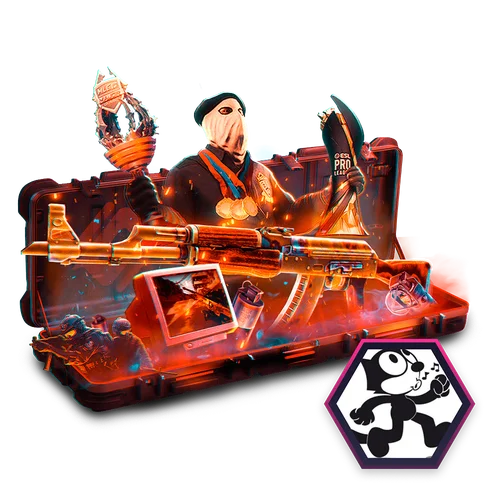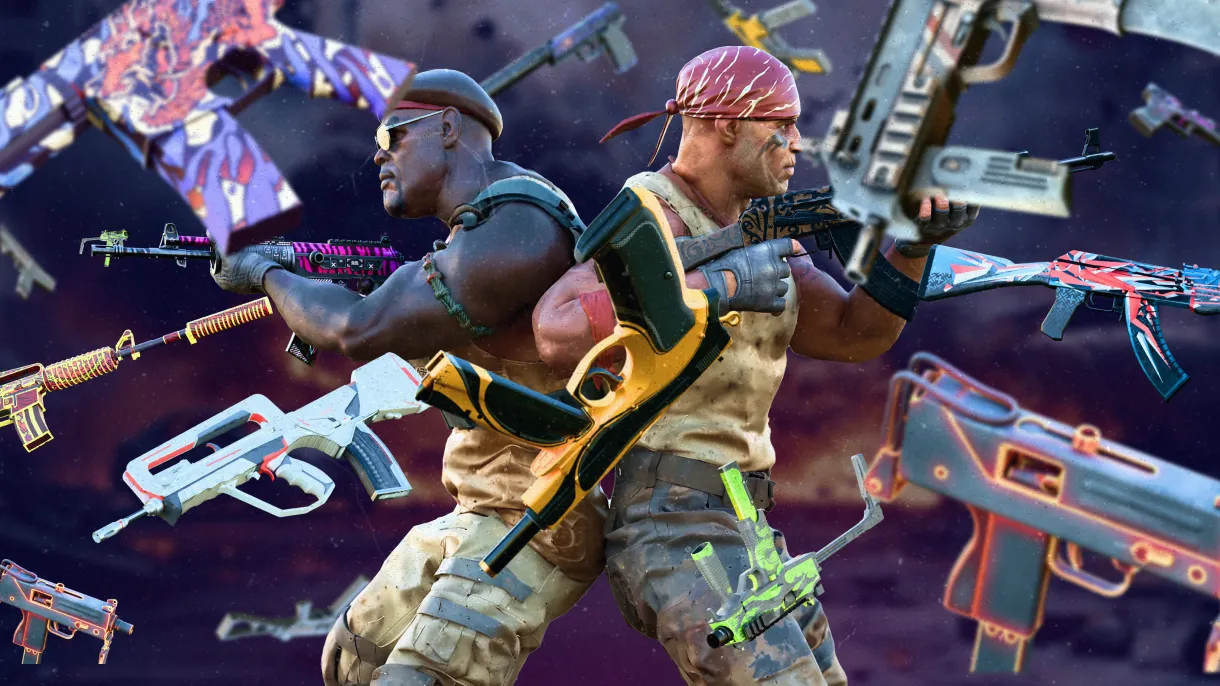The in-game item market in Counter-Strike 2 has reached a new all-time high — capitalization has exceeded $5 billion, according to PriceEmpire data. Back in February 2025, the total value of all skins was about $4.2 billion, indicating a sharp increase in interest in in-game economies and digital asset investments. This growth is driven not only by active trading but also by a broader trend toward the digitization of value among young people and gamers worldwide.
Analysis of Peak Moments
After the release of CS2 in September 2023, the market experienced a short-term decline. This was due to uncertainty surrounding the game’s new economy, technical issues, and changes in trading systems. Players were hesitant to invest until Valve showed stable support and development of the platform. However, by early 2024, the situation had stabilized — updates like “Call to Arms” and “Arms Deal” reignited long-awaited interest in skins, and capitalization followed. The market was also positively impacted by an expanding player geography — active growth in regions like Southeast Asia and Latin America brought fresh liquidity and demand.
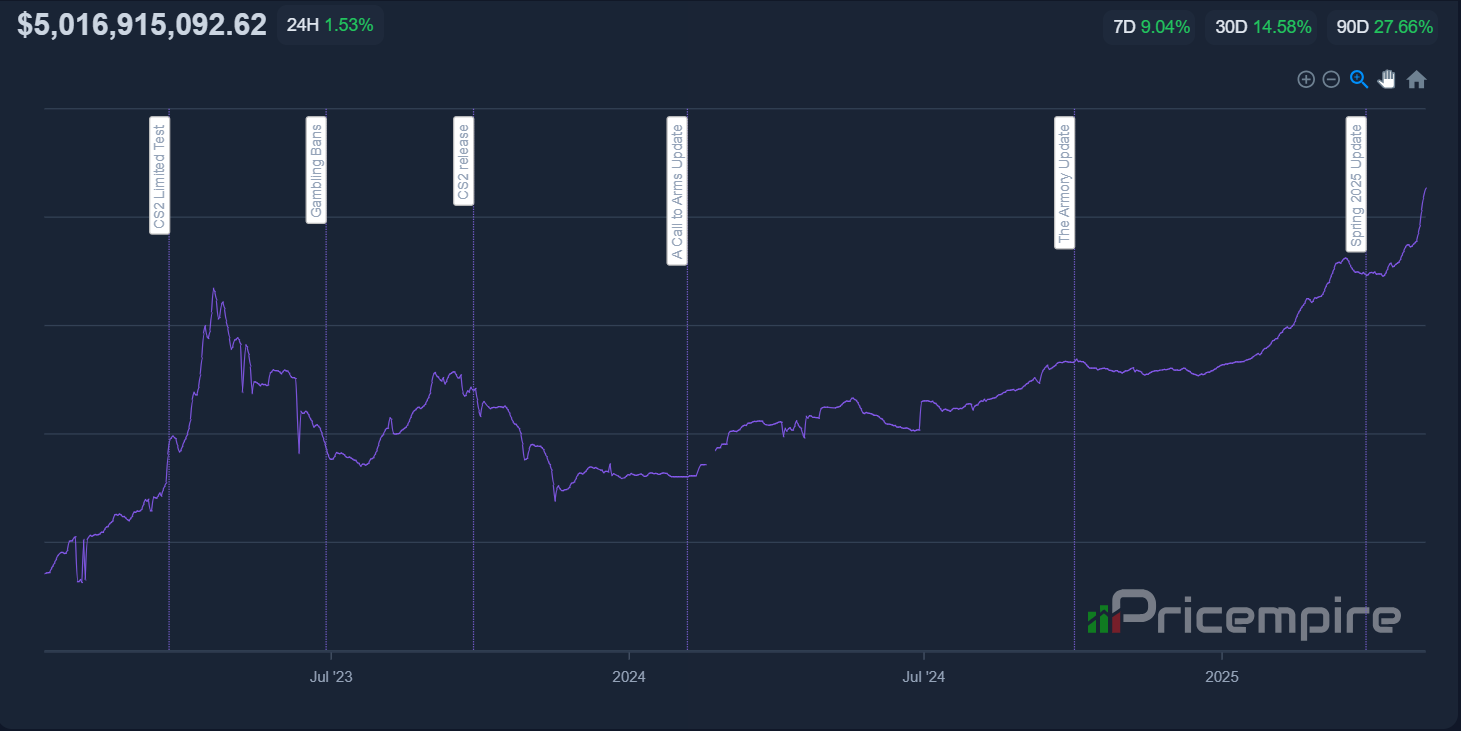
Comparison with CS:GO
In 2021–2022, CS:GO’s skin market capitalization reached around $3.5 billion at its peak. This was during the pandemic boom when online gaming was thriving. Many newcomers joined trading, and players began treating skins as long-term investments. The transition to CS2 initially created a crisis of confidence, but the new game economy has since proven both effective and more promising. Unlike its predecessor, CS2 launched with a strong presence on social media, dedicated marketing campaigns, and closer community integration.
Expert Opinions
Renowned CS2 community trader “Zipel” comments: “This is no longer just a game — it’s truly a standalone market. Some people invest in skins the same way they invest in stocks or cryptocurrencies.”
This is evidenced by the sharp rise in skin prices following the release of cases like the “Kilowatt Case” and the introduction of new popular stickers. Some items have shown returns of several dozen percent in just one week, making the market attractive to both players and traders. Another influential figure, “Anomaly”, notes: “People will always buy what looks good in-game. And if it appreciates in value — that’s a double win.”
READ MORE:HLTV Updates CS2 Team Rankings: Vitality on Top, Falcons Reach Historic High
Speculation and Trading
Today, skin trading has evolved into a full-fledged investment tool. Many users manage individual portfolios, calculate profitability, and even use bots for automated trading. Some services offer real-time price tracking and allow comparisons between skin returns and traditional investments.
Platforms such as Buff, Skinport, and Steam Market ensure transparent skin circulation, supporting market development. “Blue chip” skins like AWP | Dragon Lore, Karambit Fade, and M9 Bayonet Doppler maintain steady price growth and are in high demand among investors. Many players already view skins as a way to hedge gaming expenses and store value in digital form.
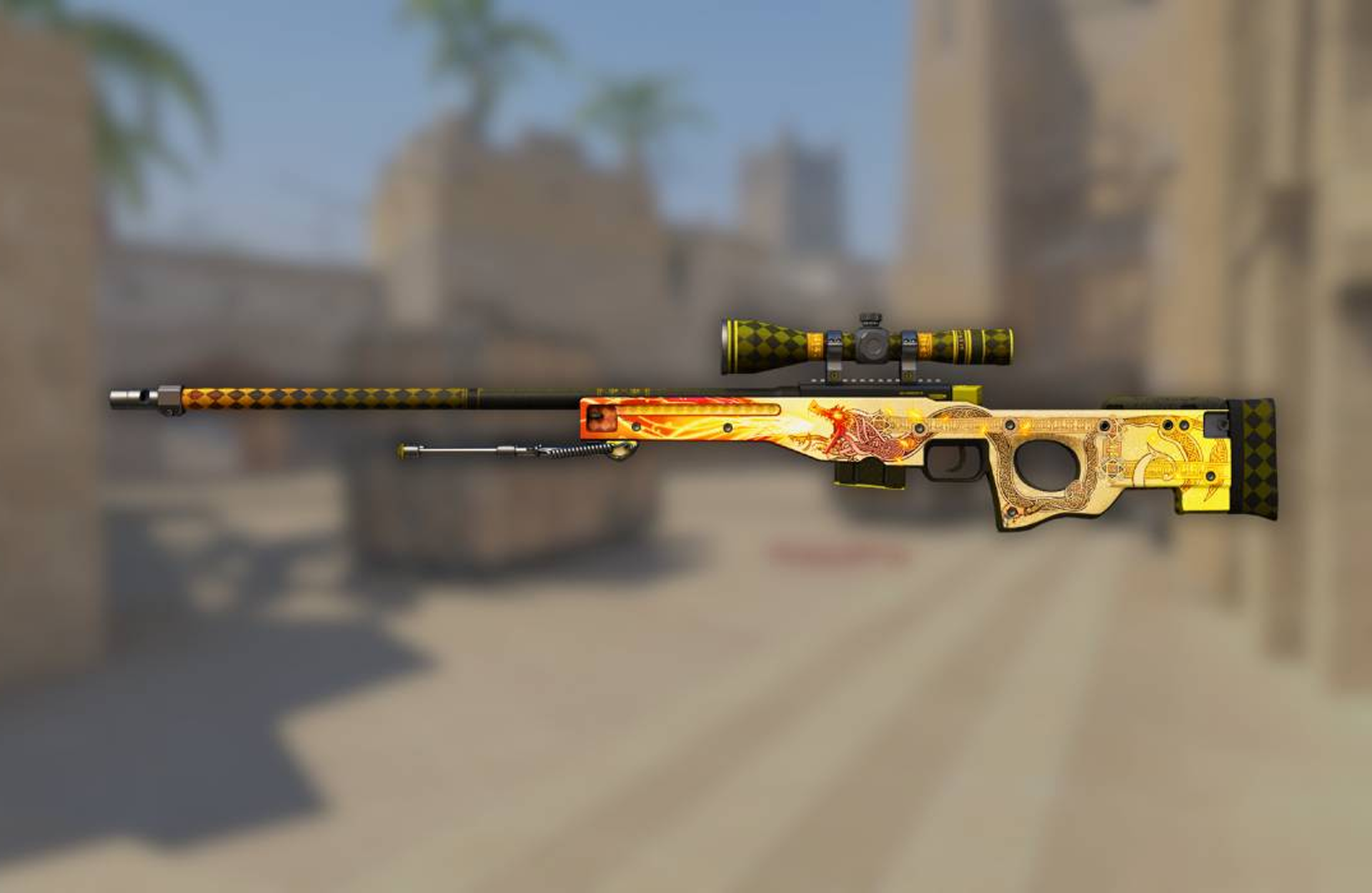
Legal and Ethical Aspects
After gambling bans involving cases were enacted in several countries (including Sweden, France, and the U.S.), skin trading became more regulated. While overall turnover declined slightly, the quality and transparency of transactions improved. This made the market less risky, especially for younger players and newcomers, who are now less likely to fall prey to illegal platforms. In some countries, discussions are underway about formally regulating in-game assets, which could permanently reshape the trading landscape.
READ MORE:TeSeS Opens Up About Defeat, Adaptation, and the m0NESY Effect in Falcons
CS2 in the Global Context
Today, CS2 skins are often compared to NFTs, cryptocurrencies, and other digital assets. They possess value, liquidity, and can serve as a store of wealth. Some players and investors are already maintaining full accounting records, tracking profits and losses from skin trades, and integrating them into their financial strategies.
Experts predict that blockchain technology might eventually be integrated into CS2, providing transparent item provenance and enabling a fully functional secondary market outside of Steam. Such a development could elevate in-game assets to the level of traditional financial instruments.
Future Outlook
The market is expected to continue growing. If Valve officially supports external trading services or decentralized platforms, the next milestone — $6 to $7 billion — could be within reach. Upcoming game updates, the release of exclusive cases and stickers, and integration with esports events may serve as growth catalysts.
However, risks remain: policy changes at Valve, major scandals, or competition from other games (such as Valorant, which is experimenting with cosmetics) could slow the market. The impact of geopolitical events should also not be underestimated — from platform restrictions to changes in currency regulation in participating countries.
The CS2 skin market has already evolved into a full-scale digital economy. Its growth demands not only the attention of players but also serious analysis from experts, traders, and regulators. The future of this market depends directly on Valve’s policy transparency, stability, and broader global trends in digital assets. In the long term, it could become one of the most dynamic sectors in the digital economy overall.
































